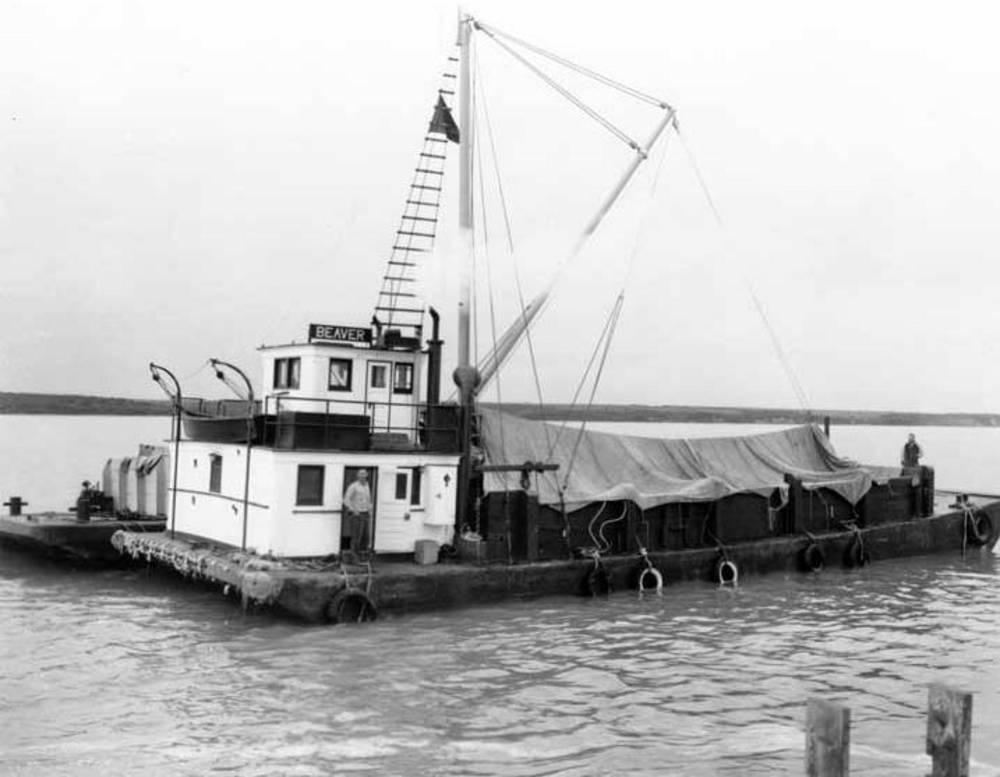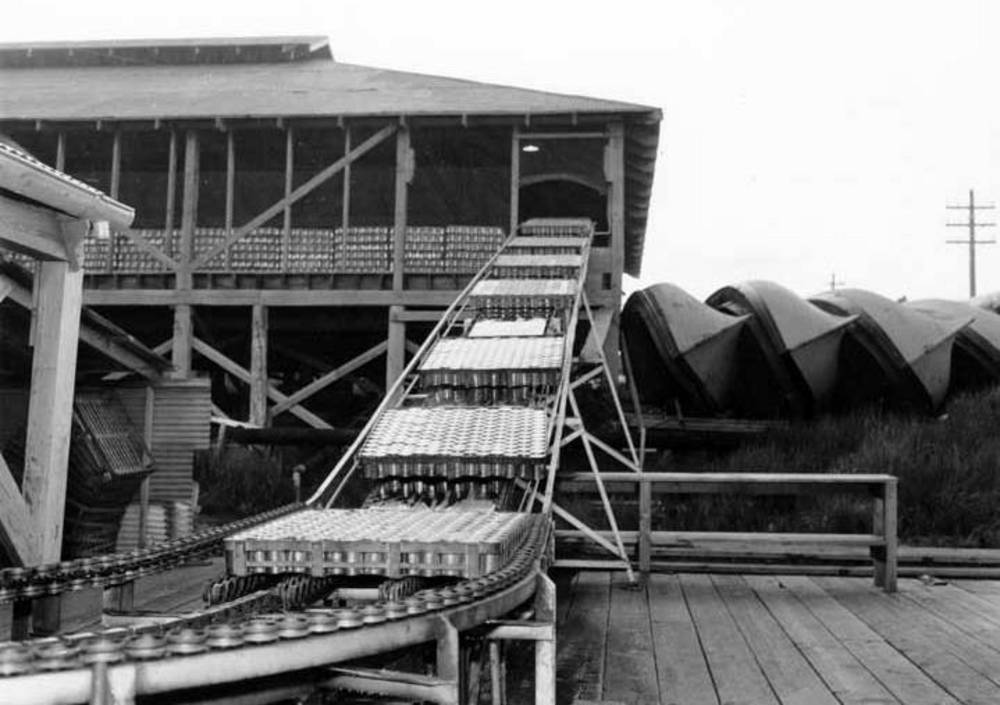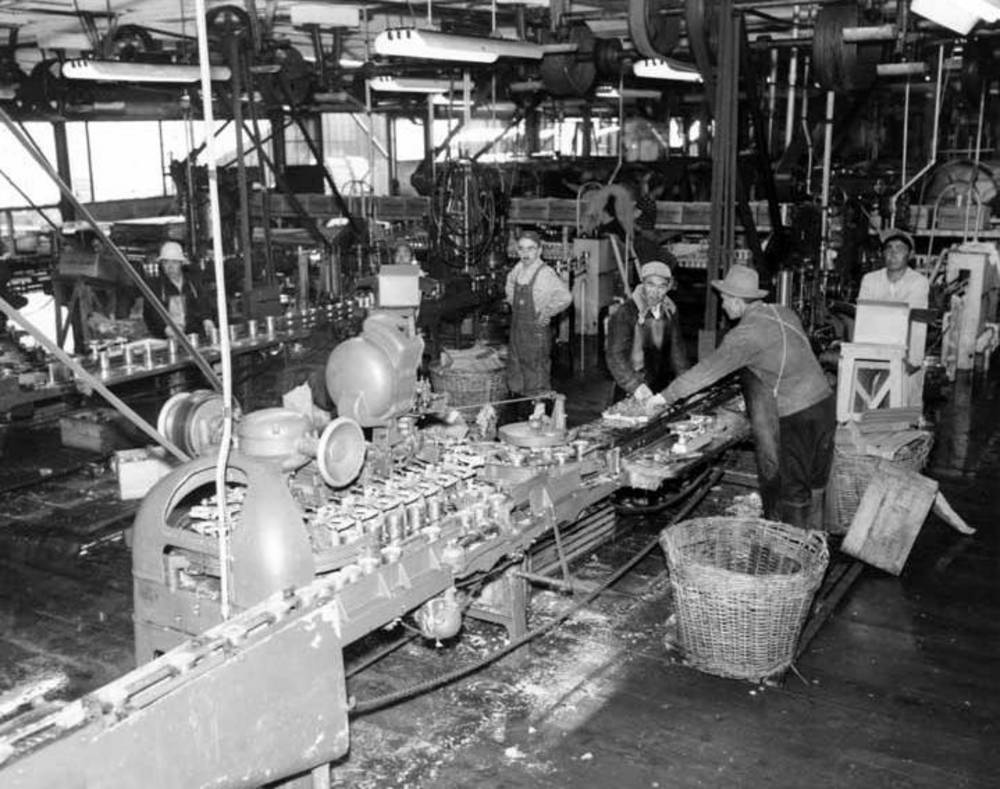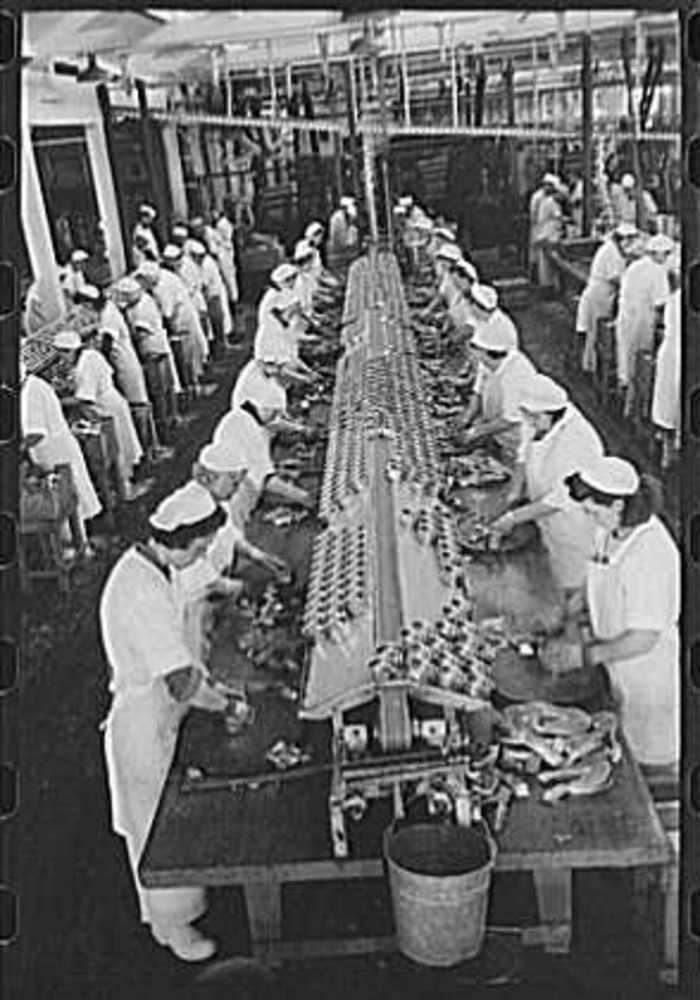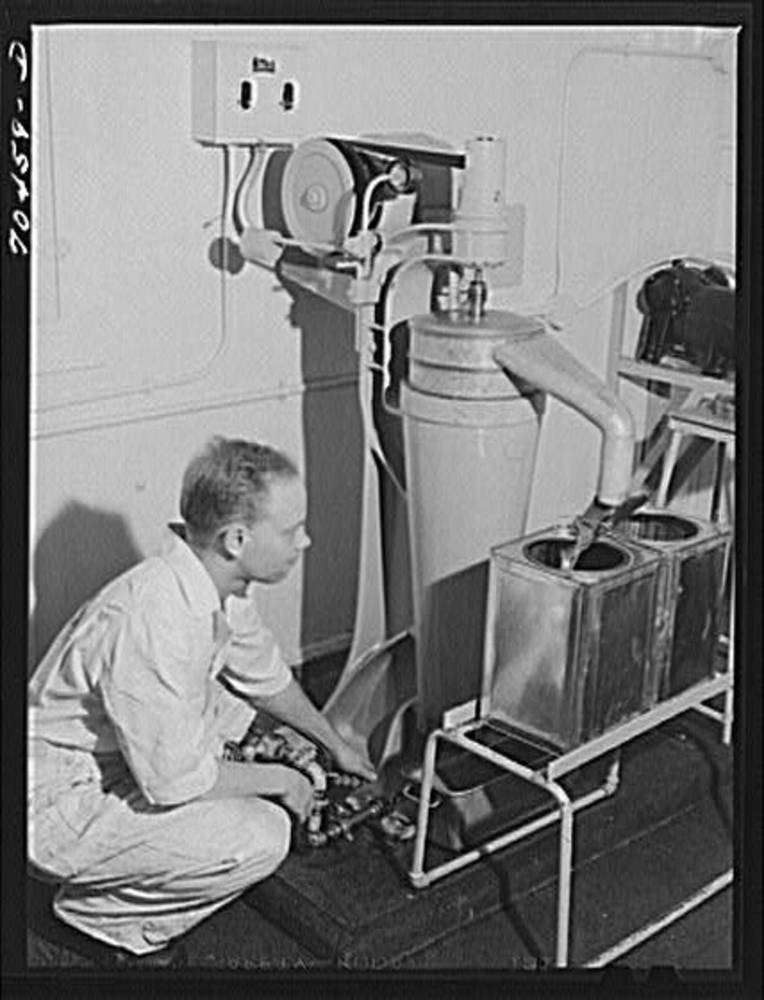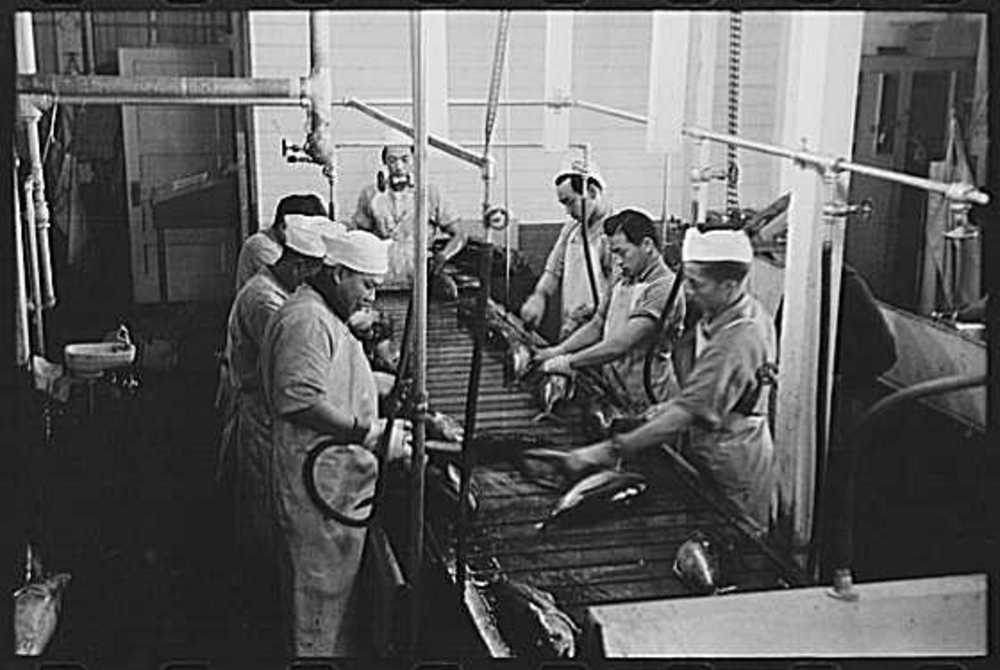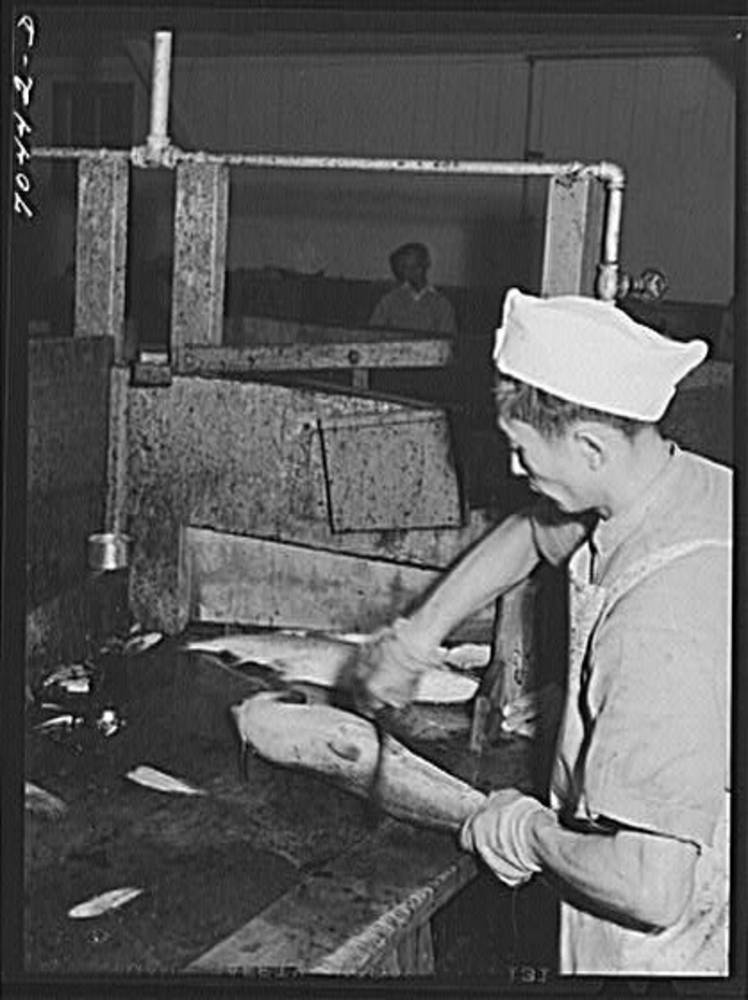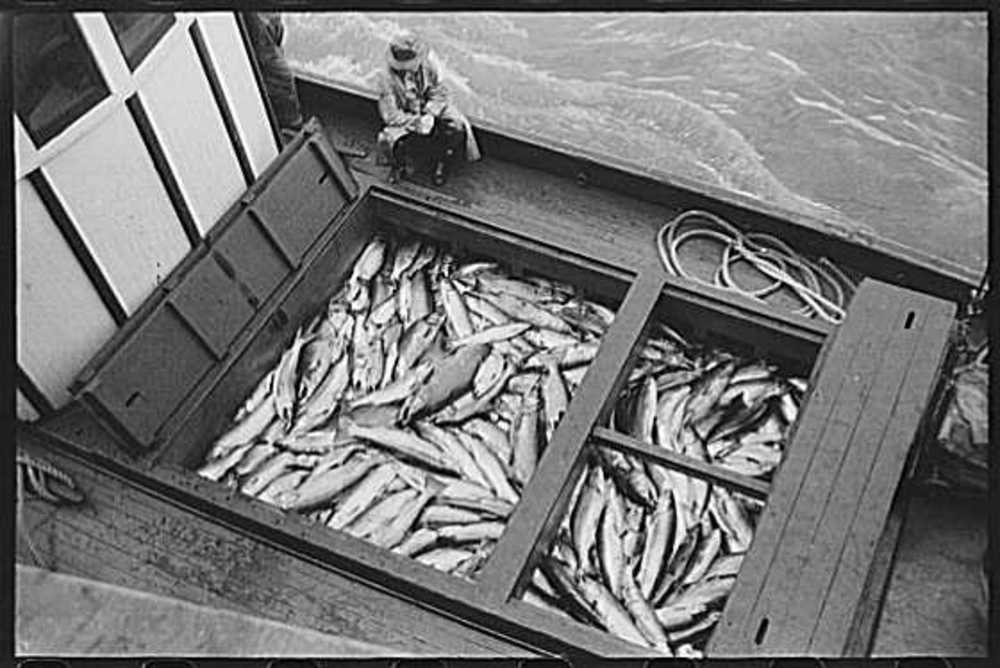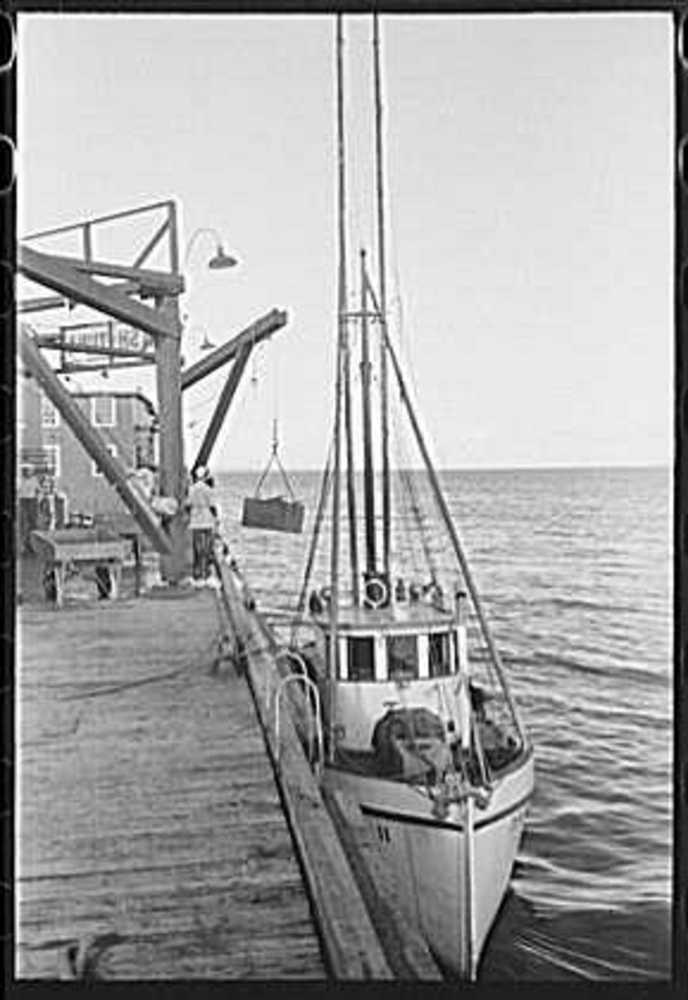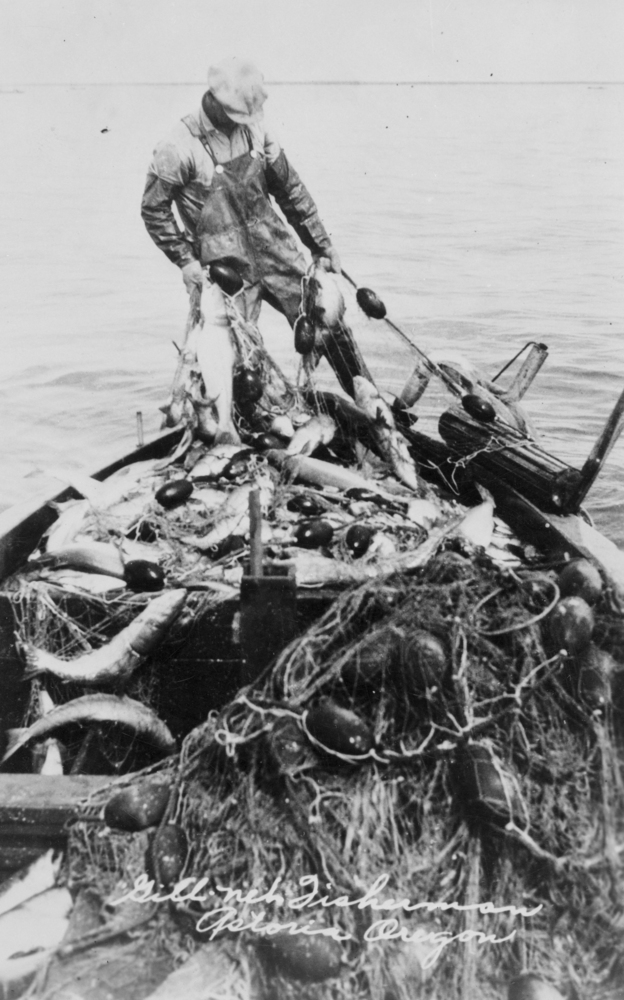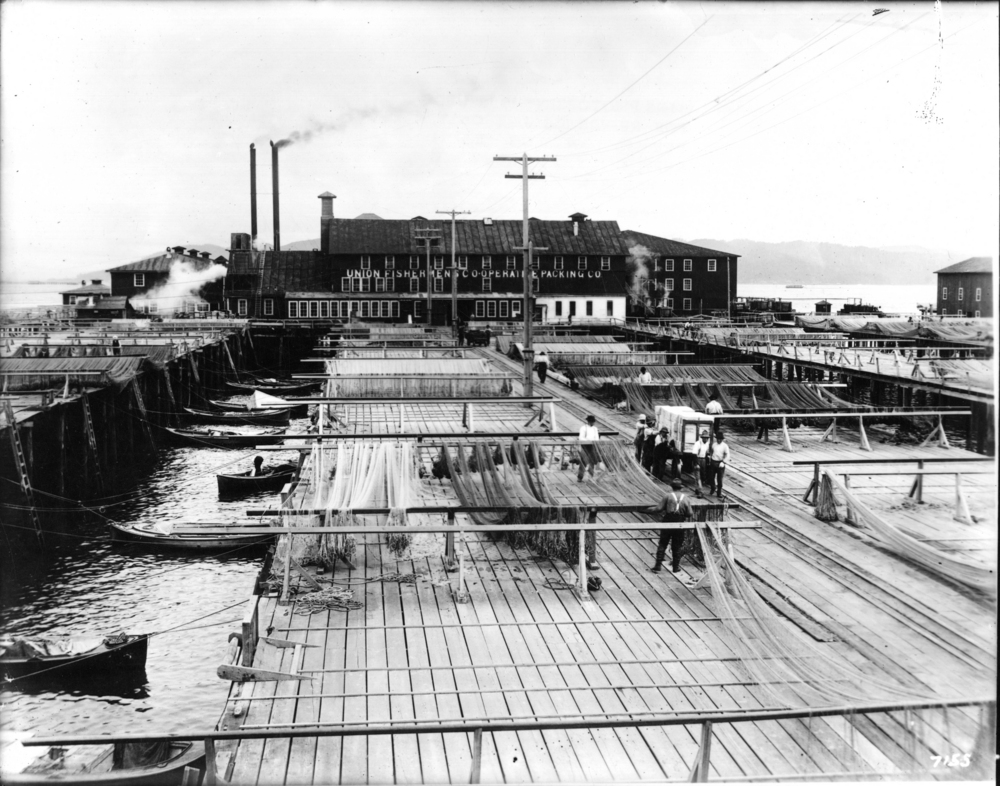In the 1890s, efforts to form an association of salmon packers on the lower Columbia River failed. In 1898, however, businessman A.B. Hammond (for whom the town of Hammond, Oregon, is named) built a railroad from Goble west to Astoria. This connection with Northern Pacific Railway provided the Astoria salmon packers with a link to Portland and eastern markets, and they began shipping canned salmon east. Hammond recognized that the salmon industry was over-capitalized and in 1899 began buying, organizing, and consolidating packing companies into the Columbia River Packers Association (CRPA), sometimes known as "The Combine."
Hammond's agent, Edwin Stone, acquired the Aberdeen Packing Company, Eureka and Epicure, Columbia River Canneries Company, Astoria Packing Co., Fishermen's Packing Co., and the J.W. and V. Cook and the Samuel Elmore facilities, as well as trap and seine sites, cans, labels, and trademarks. The first board of directors consisted of Samuel Elmore, George H. George, J.O. Hanthorn, B.A. Seaborg, J.W. Cook, M.J. Kinney, A.B. Hammond, T.B. McGovern, Edwin Stone, C.W. Fulton, G.C. Fulton, and William Gosselin. William Barker was named superintendent of canneries, with Samuel Elmore as company manager. From 1899 to 1924, the company expanded upriver and into Alaska. When Elmore died in 1910, George H. George became manager. Fred Barker, William Barker's brother, became manager in 1913.
In 1924, the company reorganized as the Columbia River Packers Association, Inc., with William L. "Tule" Thompson, W.A. Tyler, and A.B. Thompson as the incorporating officers. In the early years of the Great Depression, several Alaska salmon runs that the company depended on failed and there was a drastic drop in market prices, which resulted in serious financial losses for the company. In 1935, CRPA obtained a loan from the Reconstruction Finance Corporation, and other reorganization strategies began to pay off. By 1937, the company was showing favorable balances, and a year later the company began canning albacore tuna. By mid-twentieth century, the company had diversified into crab, bottomfish, and other species.
In 1946, Transamerica Corporation acquired a controlling interest in CRPA, Inc. Tom Sandoz became president of the company in 1950, beginning a period of rapid expansion in both markets and packing facilities. With a partnership with Wards Cove Packing Company in 1959, the firm became the world's largest salmon packer. Castle and Cooke acquired the company by merger in 1961 and changed its name to Bumble Bee Seafoods, Inc., taking advantage of its most famous brand name. Tom Sandoz became chairman of the board in 1963, with John S. McGowan as president.
Continued globalization of the fish industry sometimes resulted in the sale of corporate assets. The company downsized by selling its physical plants and fishing fleets, putting its emphasis on its brand name and reputation for quality. In 1975, the company headquarters moved from Astoria to San Francisco and later to San Diego. The Astoria canning facility closed in 1980. The company, now known as Bumble Bee Seafoods, LLC, is currently owned by Connors Brothers of Toronto, Canada.
CRPA employees and managers established the Hanthorn Cannery Foundation in 2003. This organization seeks to preserve canning industry history and establish an interpretive center in Astoria. The foundation also maintains the Hanthorn Cannery building, the oldest extant waterfront structure in Oregon (built 1875), and the last original CRPA cannery.
-
![Entrance to the Columbia River Packers Association (CRPA) plant, Astoria, Sept. 1941.]()
CRPA cannery, Astoria, 6.
Entrance to the Columbia River Packers Association (CRPA) plant, Astoria, Sept. 1941. Photo by Russell Lee, Farm Security Admin., Office of War Info. Photo Coll., Lib. of Cong., LC-USF34- 070431-D
-
![Fishing vessel "Beaver" at the CRPA cannery in Naknek, Alaska, 1954.]()
CRPA cannery, Naknek, 1954, 3.
Fishing vessel "Beaver" at the CRPA cannery in Naknek, Alaska, 1954. Wien Coll., Anchorage Museum, B85.27.995
-
![Canning line at CRPA cannery, Naknek, Alaska, 1954.]()
CRPA cannery, Naknek, 1954, 5.
Canning line at CRPA cannery, Naknek, Alaska, 1954. Wien Coll., Anchorage Museum, B85.27.1020
-
![Canning line at CRPA cannery, Naknek, Alaska, 1954]()
CRPA cannery, Naknek, 1954, 1.
Canning line at CRPA cannery, Naknek, Alaska, 1954 Wien Coll., Anchorage Museum, B85.27.1019
-
![Inspecting canned salmon on final line, CRPA cannery, Naknek, Alaska, 1954.]()
CRPA cannery, Naknek, 1954, 2.
Inspecting canned salmon on final line, CRPA cannery, Naknek, Alaska, 1954. Wien Coll., Anchorage Museum, B85.27.1012
-
![Canning line at the CRPA cannery at Naknek, Alaska, 1954.]()
CRPA cannery, Naknek, 1954, 4.
Canning line at the CRPA cannery at Naknek, Alaska, 1954. Wien Coll., Anchorage Museum, B85.27.1015
-
![Packing salmon into cans at the CRPA, Astoria, Sept. 1941.]()
CRPA cannery, Astoria, 3.
Packing salmon into cans at the CRPA, Astoria, Sept. 1941. Photo by Russell Lee, Farm Security Admin., Office of War Info. Photo Coll., Lib. of Cong., LC-USF33- 013154-M4
-
![Fish oil running into containers at the CRPA, Astoria, Sept. 1941.]()
CRPA cannery, Astoria, 7.
Fish oil running into containers at the CRPA, Astoria, Sept. 1941. Photo by Russell Lee, Farm Security Admin., Office of War Info. Photo Coll., Lib. of Cong., LC-USF34- 070459-D
-
![Gutting tuna at the CRPA, Astoria, Sept. 1941.]()
CRPA cannery, Astoria, 1.
Gutting tuna at the CRPA, Astoria, Sept. 1941. Photo by Russell Lee, Farm Security Admin., Office of War Info. Photo Coll., Lib. of Cong., LC-USF33- 013151-M3
-
![Salmon butcher at CRPA, Astoria, Sept. 1941.]()
CRPA cannery, Astoria, 5.
Salmon butcher at CRPA, Astoria, Sept. 1941. Photo by Russell Lee, Farm Security Admin., Office of War Info. Photo Coll., Lib. of Cong., LC-USF34- 070442-D
-
![Boatload of salmon at the docks of the CRPA, Astoria, Sept. 1941.]()
CRPA cannery, Astoria, 4.
Boatload of salmon at the docks of the CRPA, Astoria, Sept. 1941. Photo by Russell Lee, Farm Security Admin., Office of War Info. Photo Coll., Lib. of Cong., LC-USF33- 013153-M3
-
![Fishing boat unloading at docks of CRPA, Astoria, Sept. 1941.]()
CRPA cannery, Astoria, 2.
Fishing boat unloading at docks of CRPA, Astoria, Sept. 1941. Photo by Russell Lee, Farm Security Admin., Office of War Info. Photo Coll., Lib. of Cong., LC-USF33- 013157-M5
-
![CRPA cannery, Chignik, Alaska, about 1912]()
CRPA cannery, Chignik, ca. 1912.
CRPA cannery, Chignik, Alaska, about 1912 University of Washington Lib., Special Coll. Div., John E. Thwaites Photo Coll., PH Coll 247
Related Entries
-
![Andrew B. Hammond (1848-1934)]()
Andrew B. Hammond (1848-1934)
Sensing opportunity following the Panic of 1893, Montana businessman An…
-
![Columbia River Fisherman's Protective Union]()
Columbia River Fisherman's Protective Union
The Columbia River Fishermen's Beneficial Aid Society was organized on …
-
![Seufert Brothers Cannery]()
Seufert Brothers Cannery
Seufert Brothers Company was the leading salmon packer on the Middle Co…
-
![Union Fishermen's Cooperative Packing Company]()
Union Fishermen's Cooperative Packing Company
In Astoria in 1897, some 200 gillnet fishermen formed the Union Fisherm…
Related Historical Records
Map This on the Oregon History WayFinder
The Oregon History Wayfinder is an interactive map that identifies significant places, people, and events in Oregon history.
Further Reading
Martin, Irene. The Flight of Bumble Bee: One Hundred Years of the Columbia River Packers Association. Long Beach, Wash.: Chinook Publishing, 2009.
J. O. Hanthorn Cannery Foundation. http://www.canneryworker.org/.


